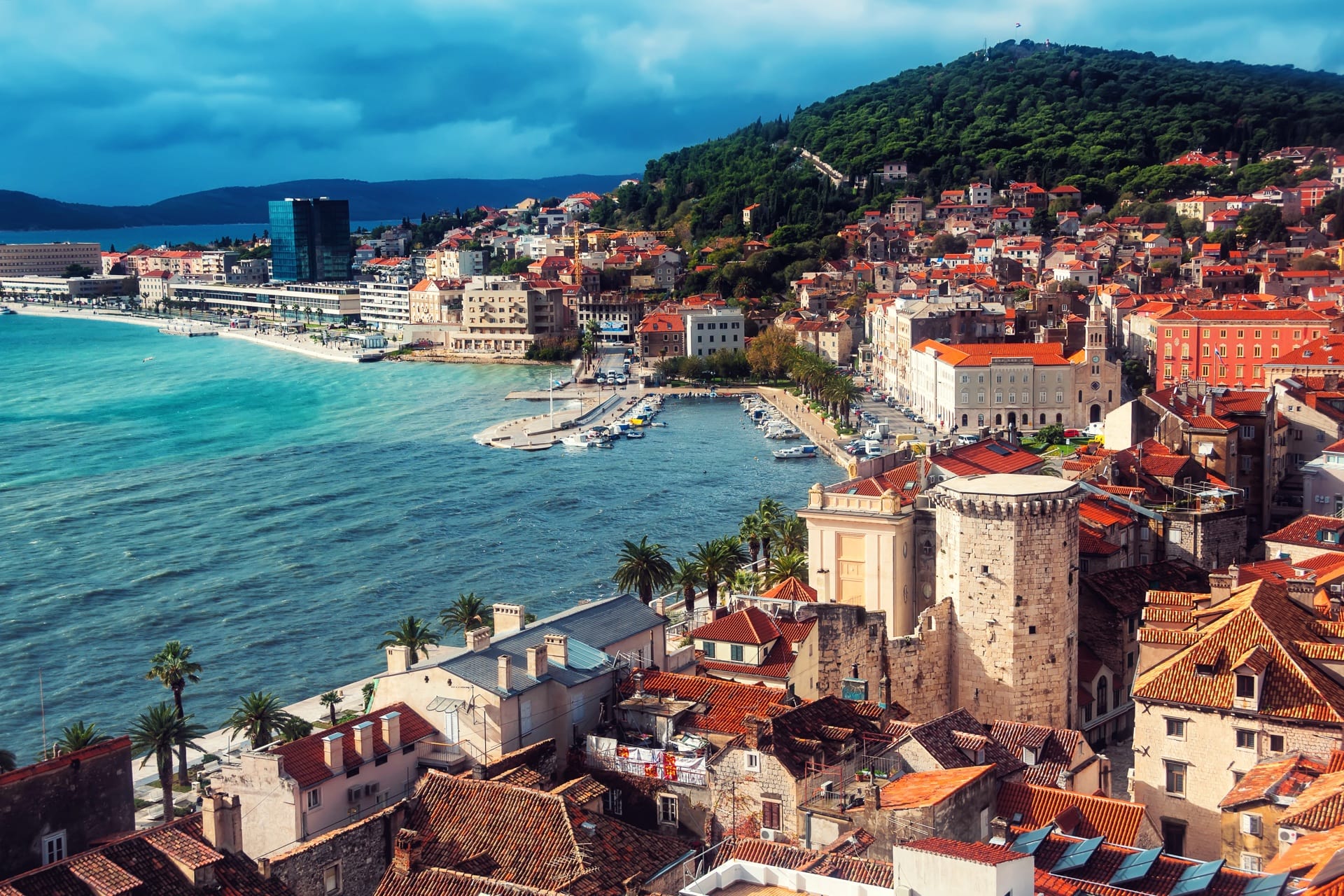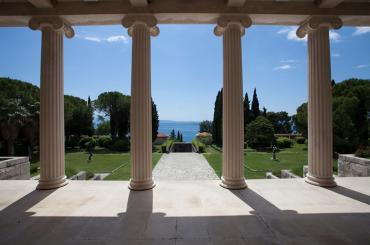
Culture, art & history trip
With Split as your home base, tour three UNESCO World Heritage sites and visit Međugorje, one of the most famous Roman-Catholic pilgrimage destinations in the world.
Extremely versatile trip designer with an established career in travel business
Fill out a few details and get a detailed itinerary with all inclusions and trip details - we can customize them together
People do not say for nothing that travelling is the source of youth. If you are curious and an explorer, find your inspiration in Croatia starting in Split. We will take you to some stunning historical sites under the protection of UNESCO. Feel as though you have travelled back in time when you take a look at the sublime classical architecture of the Diocletian’s palace in Split and the medieval town of Trogir. Experience Mostar’s rich cultural heritage and find out what does the shape of the Old Bridge represent. A trip to Međugorje, one of the famous Roman-Catholic pilgrimage destinations in the world will round up the day.
The view of Split at night. Did we ever tell you what a popular tourist destination it is?
Ships tied along Split's promenade. Diocletian's palace and Cathedral & Bell Tower of St. Domnius behind them
A view of Trogir from the castle walls
A field trip outside of Croatia just over to Mostar will take you to the Old Bridge, another UNESCO World Heritage site
Split is the largest city on the Croatian coast. It has preserved the relaxed lifestyle of the Mediterranean. There are many sides to this region: a magnificent history and an abundance of landmarks, exquisite food and wine, the beauty of natural and cultural heritage and a pleasant climate year-around. The region boasts some of the many UNESCO World Heritage sites in Croatia: the city of Split grew around the palace of the Roman Emperor Diocletian and the small medieval island town of Trogir.
Among European cathedrals, Split cathedral has the oldest building as its centre – Emperor Diocletian’s mausoleum. While there, touch the thumb of the Gregory of Nin statue because the legend has it that almost everybody passing by the statue touches it, believing that it will bring good luck and make wishes come true.
The Dalmatian cuisine mostly contains slowly cooked and easily digested food with a lot of fish, olive oil, vegetables and herbs. The little culinary secrets with the scent of bay leaves, rosemary or basil also include capers and olives, bura-dried Dalmatian prosciutto and sheep milk cheese.
Some of the most well-known Dalmatian restaurants, as well as numerous indigenous taverns can be found in Split.
Try poljički soparnik – a meal made from chard and dough baked on coal under the bell. But the specialties of Dalmatian Hinterland are also interesting, such as sinjski arambašići – meat wrapped in small leaves of sour cabbage, fried frog legs and trout from the river Cetina.
Prokurative, known as the Republic Square, is a big square west from Riva (waterfront), it resembles the Venetian St. Marcus Square and it is surrounded on three sides by Neo-Renaissance buildings with arches the square was named after. It has a wonderful view overlooking the harbour and Riva.
You will also visit the stunning historical places and cross also the UNESCO protected Old Bridge in Mostar (Bosnia and Herzegovina). It is a must-do in the city of contrasts, influenced by different eastern and western cultures and religions.
The story about the shape of the Old Bridge in Mostar says that it represents one half of the circle, its reflection in the water is the other, and the overall image represents life itself.
Arrival to Split and accommodation at a 4-star hotel close to the heart of the old town nucleus, near Diocletian’s palace.
Start your day with an energising breakfast in the hotel as afterwards you will walk around Split and go sightseeing. This also includes Diocletian’s palace, which is a UNESCO World Heritage site, located in the heart of the old town.
You will also visit old Roman cellars and Peristyle, the central square of the palace, located at the intersection of two main ancient roads. Peristyle is dominated by the great Cathedral of St. Domnius, positioned on the area once belonging to Diocletian’s mausoleum. You will then walk to the magnificent Golden Gate which in Roman times led to Salonae, and then to the statue of the Croatian bishop Gregory of Nin.
From there you will move on to Trogir, a medieval town whose nucleus is situated on a small island, which is also a UNESCO World Heritage site. Visit to the Cathedral of St. Lawrence, built in the 13th century, one of the most significant monuments in Trogir. The main entrance to the Cathedral takes you to Radovan’s Portal, a masterpiece from 1340. Free time for lunch (payment on the spot).
Upon return, you will visit the remains of the ancient city of Salonae, the capital of the Roman province Dalmatia, from where the medieval town of Solin later expanded. Salonae was founded in the 2nd century B.C., and it had its peak in the 3rd and 4th century because, as legend has it, it was the hometown of Emperor Diocletian and it is also the largest archaeological park in Croatia. You will see the remains of fortified walls, aqueducts, basilicas, thermal baths, theatres and amphitheatres. Return to Split.
Buffet breakfast. We will leave the hotel at 8 a.m. and drive down the coast road through the inner Dalmatia up to Mostar in Bosnia and Herzegovina. Situated on the bank of the river Neretva, it is the city of contrasts, wide streets, narrow alleys and traditional old bazaars, where eastern and western cultures meet.
The city was named after the guardians of the bridge (mostari). The old bridge is the city’s unique landmark that absolutely has to be visited and also offers a unique view of the city. It is also a member of UNESCO World Heritage sites list for Bosnia and Herzegovina (one of total three sites). It was built by the workers from Dubrovnik as ordered by Suleiman the Magnificent and following the project by Hajrudin, the pupil of Sinan, a great Turkish builder from the 16th century.
After sightseeing, visit the wine-cellar Brkić and tasting of 5 different wines, with prosciutto, cheese and olive oil. Next up is the trip to Međugorje, one of the most famous Roman-Catholic pilgrimage destinations in the world. What made it famous are the apparitions of Virgin Mary on the Crnica hill that have been occurring as a phenomenon since 1981. Tour of the Shrine, visited yearly by a million of Catholics from around the world, and later free time for lunch (payment on the spot). Return to Split.
After a buffet breakfast, make time for Split, the Mediterranean flower. From Marjan hill viewpoint you will have a spectacular view of the city and the Brač channel, and wandering the hill you can discover more than 40 old sacral objects where sailors’ wives would pray for the safe return of their husbands.
We will double-check availability and make reservations for your rooms, restaurants, guides etc.
With reservations confirmed, we will prepare the best offer possible in regard to your arrival date & party size
You will get the offer via e-mail, along with the payment options. Feel free to request further customisations!
8 DAYS
4 DAYS
4 DAYS



